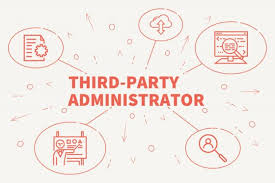When I was at law school, I was the editor-in-chief of the law school’s newsmagazine. My rise to the top probably had a lot to do with the free time I had by not making law review or any other of the law journals. I failed to get on to any of the four journals through either grades or a write-on competition. While I get lauded for my writing on my blog and through my many articles, my legal treatise writing was probably not very good to get on. Regardless, I took to the pages of the magazine and commented on how I had issues with the entire journal selection process.
A year or so later, I was contacted by two members of a law journal who advised me of discrepancies with the time sheets of law journal members. Law journal members had to document 180 hours of work for the year to net 4 academic credits for the year. Well, the time sheets for most members of that journal fell far short of 180 hours, especially those who were elected to the editorial board. Since the editorial board was elected only by the previous editorial board (and not by the current staff), it was alleged that favoritism and not merit got these board members elected. For example, the new Managing Editor only completed about 80.5 hours, almost 100 hours short of his credit requirement. While the time sheets were legitimate and the editorial board had no answer for the time hour discrepancy, they attacked my writing of the article because of my bias against the journals. I knew I would be saddled with that claim, but none of my staff members were willing to write it themselves (as a side note, my co-writer was a member of that journal previously and was later targeted for retribution because of a discrepancy with his timesheet).
As many of you know, I served as an attorney for a couple of third-party administration (TPA) firms for about 9 years. So I have seen the good, the bad, and the ugly of the retirement plan industry. So I am quite vocal about some of the issues I’ve seen. So while I tell stories about issues of TPA errors and hidden expenses based on my experiences, I get labeled as someone who is anti-TPA or I let my experiences cloud my view of TPAs. On the contrary, having worked for a not-so-good TPA as their top attorney (Sheldon, you wouldn’t have known how to draft a plan IMHO) has given me an appreciation of the good TPAs that I have worked with since I left. I have a great appreciation for good TPAs because they make my job easier and they save my clients money through very sophisticated plan designs.
On the contrary, too many financial advisors and plan sponsors discount what a TPA does, so they chase after the lowest costs TPA and pay for it later through required plan corrective action. A good TPA will increase contributions to highly compensated employees at a fair fee and do competent work to preserve tax qualifications. TPAs aren’t laundry detergent, there is a difference between the good, the bad, and the ugly TPAs.
When it comes to service providers, it is a fact that TPAs do the bulk of the work. Plan administration, especially daily 401(k) administration is a highly technical and precise job. At least a need to be precise. However, whatever the reason may be, there are a lot of TPAs that aren’t up to the task of being expert administrators and these plan errors threaten the tax qualification of a retirement plan. While ERISA attorneys, auditors, and
financial providers are important cogs of a retirement plan machine, the TPAs do the bulk of the work and if they do the bulk of the work, it is more likely that an incompetent TPA would cause an error that threatens a plan’s qualification. That is not a knock against TPAs, it’s just a fact that they do most of the work.
Many people don’t understand the role of TPAs and how it’s important to choose a good one. Many plan sponsors and their advisors only discover that when it’s too late.
People often think that my background as a TPA attorney was some sort of a traumatic experience. Hardly, it gave me the background to be an ERISA attorney who can be outspoken and diligent in working with plan sponsors in trying to avoid excessive plan expenses and minimize their liability at a flat fee.







